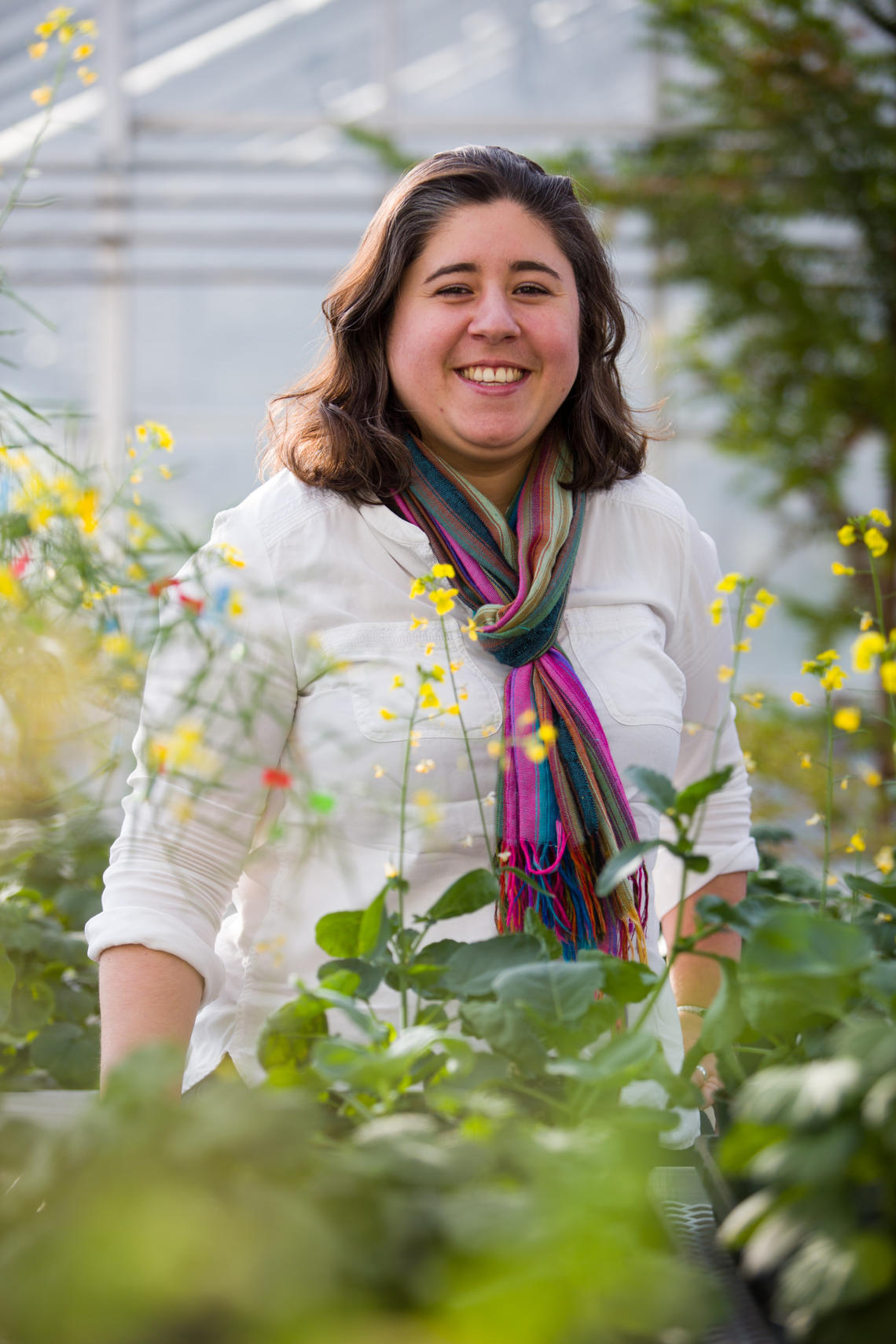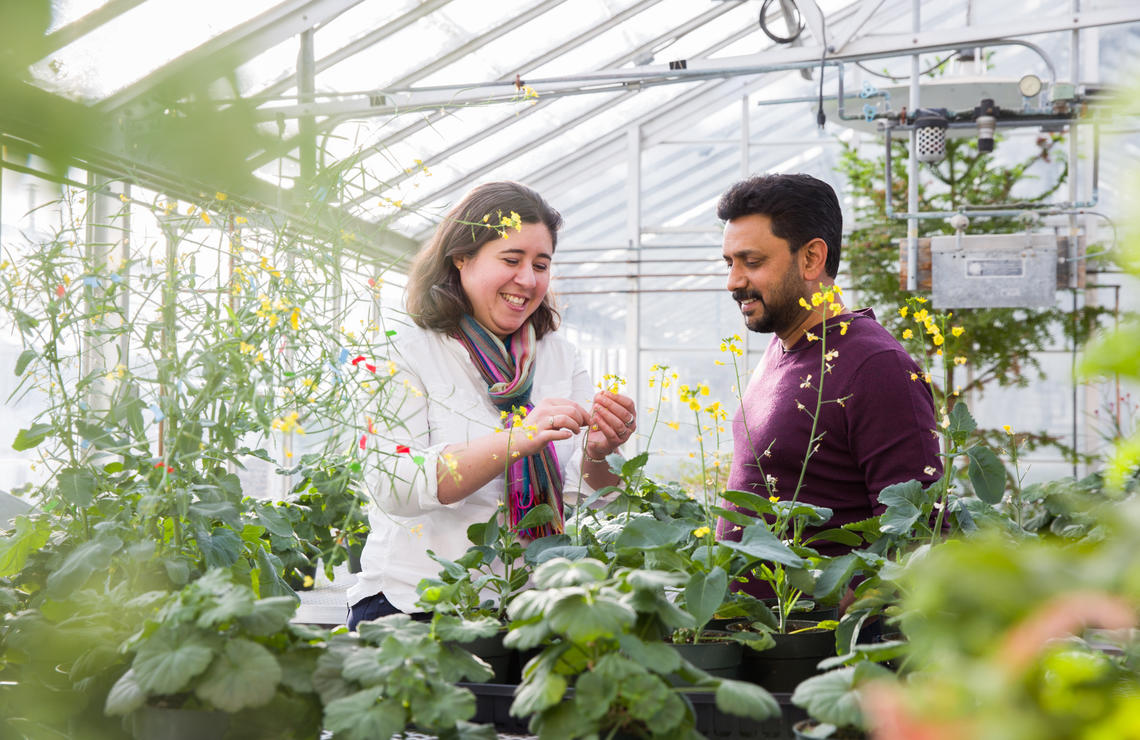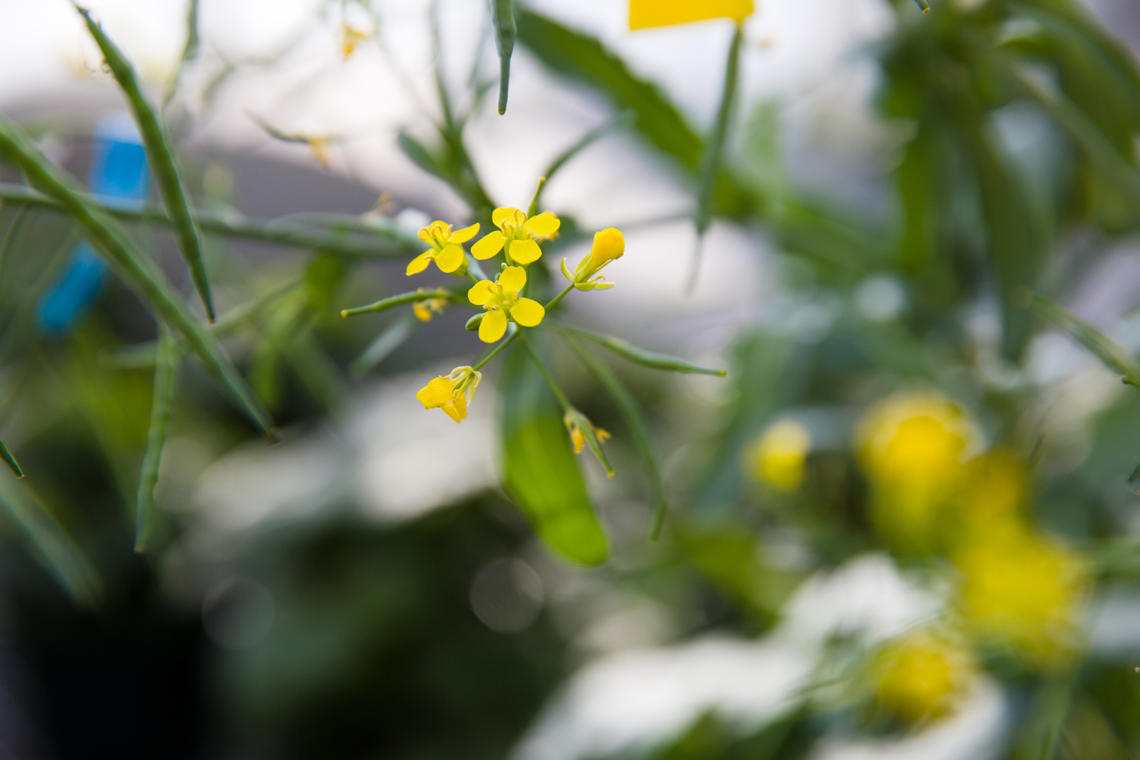Feb. 20, 2019
University of Calgary scientists identify key canola protein involved in pollination

“Plants are amazing. They don’t move, they can’t walk, so they have to be creative," says Scandola.
Riley Brandt, University of Calgary
Plant biology researchers in the Faculty of Science at the University of Calgary have discovered a key canola protein and the vital role it plays in successful pollination.
The discovery of the protein — phospholipase D1 (PLD1) — could be used by biotechnology companies to create new, more vigorous hybrid varieties of canola, and to promote and accelerate pollination even in challenging environmental conditions, the researchers say.
In a new study, Drs. Marcus Samuel and Sabine Scandola identified the protein and showed that it is necessary both for pollination, and for the biochemical process through which canola plants reject self-pollination and self-fertilization (called the “self-incompatibility response”) to prevent inbreeding.
“We have identified a new, major target in the self-incompatibility pathway, which could be applied in the canola industry in making hybrid plants,” says Samuel, associate professor of integrative cell biology in the Department of Biological Sciences.
The UCalgary study also is the first ever to show that a lipid molecule (a fatty organic compound) in the female reproductive tissue is essential in the biochemical signaling that enables pollen, the male reproductive tissue, to establish on the female reproductive tissue in canola plants — thereby leading to fertilization and seed production.
“Plants are amazing. They don’t move, they can’t walk, so they have to be creative in having a lot of mechanisms to survive,” says Scandola, who performed all the experiments in the study for her PhD with Samuel. She is the lead author of their study, “A Flower-Specific Phospholipase D is a Stigmatic Compatibility Factor Targeted by the Self-Incompatibility Response in Brassica Napus (Canola),” published in Current Biology, a top-ranked science journal.

“We have identified a new, major target in the self-incompatibility pathway," says Marcus Samuel.
Riley Brandt, University of Calgary
Pinpointing the protein
In canola, the evolved ability to self-pollinate and self-fertilize is detrimental, especially for hybrid seed production, because this weakens the genetic diversity and hybrid vigour, Samuel says. Hybrids are also bred for desired traits such as increased yield, oil content and disease resistance.
For more than 30 years, the global canola industry has relied on breeding hybrid varieties from male plants that pollinate normally and “male-sterile” female plants that can only receive pollen. The two parental lines are grown side-by-side in long wide strips, then cross-pollinated to produce commercial hybrid varieties.
The pure hybrid seeds resulting from the hybrid canola can be grown only for one crop, because second-generation hybrid seeds won’t produce true copies of the original hybrid plant.
Using a proteomics approach that scans thousands of proteins at the same time, Samuel’s laboratory identified more than 20 unique proteins that could potentially be involved in the self-incompatibility response in canola. Scandola decided to focus on the PLD1 protein.
The researchers first used transgenic techniques (altering genetic material) to “knock down” the expression of PLD1 in self-pollinated canola. This resulted in these plants now being unable to accept their own pollen and fertilize themselves — confirming that PLD1 is required for successful pollination.
Using biochemistry techniques, Scandola showed that PLD1 is involved in producing the phosphatidic acid (PA) lipid molecule. She then used transmission electron microscopy, which revealed the intricate details of cellular structure, to show that PLD1 plays an important part in changing the membrane topography of female cells in the canola plant’s stigma — thereby delivering nutrients to the male pollen attached to the stigma and enabling the pollen to germinate.
“What we found is when you take this protein PLD1out, PA (the lipid molecule) is not generated. The membrane topography is not modified following pollination and the nutrients are never delivered to the pollen,” Samuel says.

In canola, the evolved ability to self-fertilize weakens the genetic diversity and hybrid vigour.
Riley Brandt, University of Calgary
Tracking the biochemical pathway
The researchers then used transgenic techniques to enhance the expression of PLD1 in the stigmatic cells of canola varieties that reject their own pollen. This resulted in these plants now being able to accept their own pollen and self-fertilize, because there was a sufficient amount of PLD1 present in the stigmatic tissue to trigger the membrane activity and deliver nutrients to the pollen.
“This proves that this protein is a major component in the biochemical pathway from compatible to incompatible,” Samuel says.
“Once you identify these players and characterize how they work, you can manipulate these candidates and you have a choice of making the plant compatible or incompatible,” he adds. “It’s like an on-off switch.”
Samuel and Scandola’s study was funded by the Natural Sciences and Engineering Research Council of Canada.
Scandola is now a postdoctoral fellow at the University of Alberta in partnership with Edmonton-based G2V Optics, a U of Alberta spinoff company developing advanced optical technology, including for horticulture lighting.
